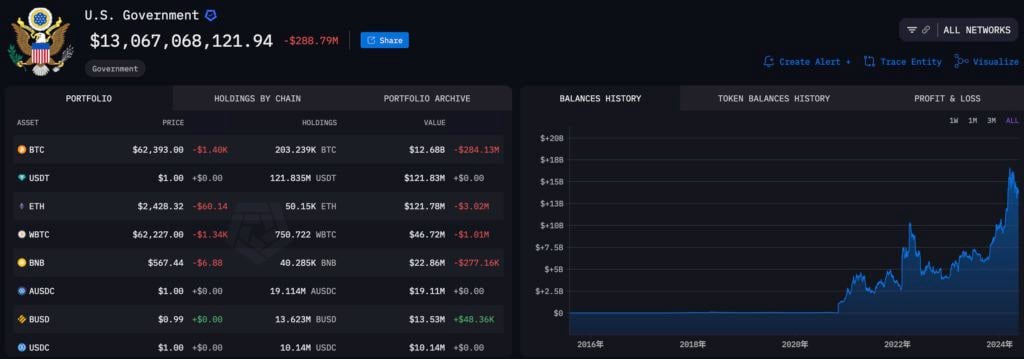Bitcoin saw continuous selling pressure today (14th), breaking through the $98,000 and $97,000 levels in the afternoon session, hitting a low of $96,351, the lowest price since the second half of 2025, plunging the market into panic again.
Wen Hongjun, a financial media personality and director of the Taiwan Fintech Association, said in an interview that the main reasons for this decline include the probability of an interest rate cut in December falling below 50% and the liquidity shortage caused by the US government shutdown. Bitcoin is unlikely to decouple from the US stock market in the short term, so it is essential to be conservative in operations and never use leverage.

Escalating US shutdown risk triggers cash shortage, evaporating Bitcoin buying pressure.
Wen Hongjun stated that over the past two to three weeks, the shadow of the US government shutdown has intensified, triggering a rapid tightening of liquidity in the money market, directly leading to a “water shortage” in the market—tight funding, insufficient buying power, and a continued decline in the stock market. Bitcoin, which is highly correlated with the money supply, has also been unable to escape the effects, with buying power almost completely disappearing and prices naturally weakening.
In addition to overall market liquidity shortages, unique negative factors for Bitcoin are also brewing. Wen Hongjun mentioned that “DAT concept stocks” (Digital Treasury Assets), which have been sought after by the market since June, are represented by the US-based MicroStrategy (formerly MicroStrategy). As Bitcoin reserve companies, they have been imitated by over a hundred listed companies worldwide. However, since their August highs, these concept stocks have plummeted, recently falling below their net asset value (MNAV) of Bitcoin, raising market concerns about a “death spiral” risk. If these companies’ market capitalization falls below the value of their Bitcoin holdings, they may sell their reserves,
further exacerbating market selling pressure. Wen Hongjun pointed out, “This disappointing selling pressure has been very evident recently, accelerating the decline in Bitcoin.”
Experts urge investors to avoid leverage and reduce exposure as year-end liquidity weakens.
Regarding recent trends and the future market outlook, Wen Hongjun believes that Bitcoin will remain difficult to decouple from US stocks in the short term, and its current structure remains weak. Without significant positive policy announcements from the US, such as the establishment of a “national strategic reserve for Bitcoin” or the accelerated passage of the “Clarity Act” (cryptocurrency regulations), the market is unlikely to initiate a new bullish wave. In the short term, from now until Thanksgiving at the end of November, the market is likely to remain sluggish. “Wall Street basically enters rest mode after Thanksgiving, and the liquidity situation will inevitably be even weaker,” he said.
Regarding how investors should operate amidst the volatility in the cryptocurrency market, Wen Hongjun stated frankly that we have entered the “Q4 winter” for both the US stock market and cryptocurrencies, with market funds gradually receding. Wall Street funds typically complete their annual positioning before Thanksgiving, and market volatility may be even greater before the end of the year. He cautioned investors who still wish to go long, “You must be extremely cautious,” as the upside potential is limited while the risks are relatively higher.
Wen Hongjun stated that the only possible short-term positive factor for the market at present is if the US government restarts operations after negotiations and increases liquidity injections, which could temporarily alleviate market funding pressures. However, overall, he still does not see any clear positive factors sufficient to support a significant rebound in cryptocurrencies. Therefore, he advises a conservative approach to trading from mid-November to December, and strongly discourages the use of leverage.
Wen Hongjun concluded by reminding investors that the cryptocurrency market is currently in a sensitive period with multiple negative factors. Regardless of whether it is Bitcoin or other cryptocurrencies, investment strategies should return to “low leverage, low exposure, and high vigilance” to avoid unnecessary losses due to excessive trading during the off-season at the end of the year.

















